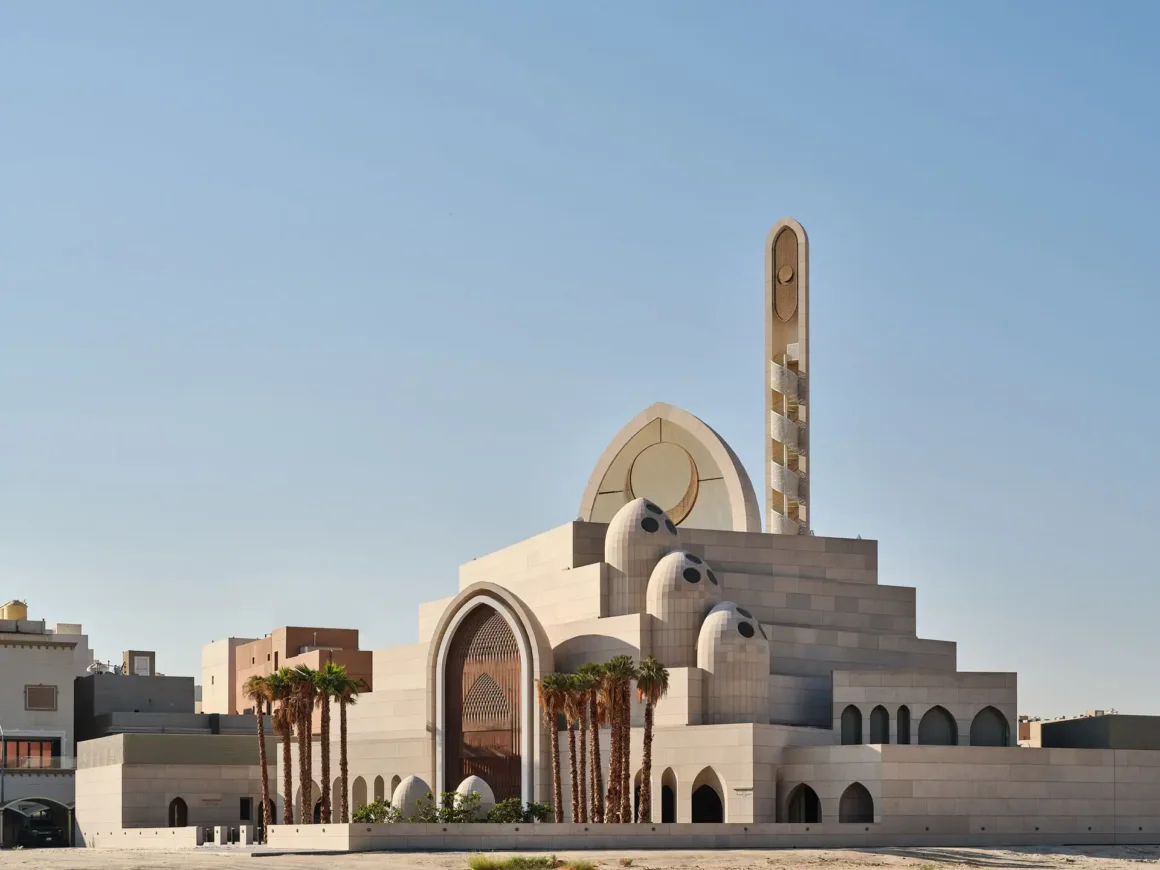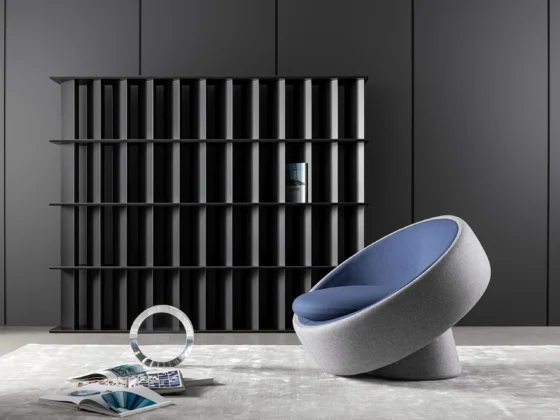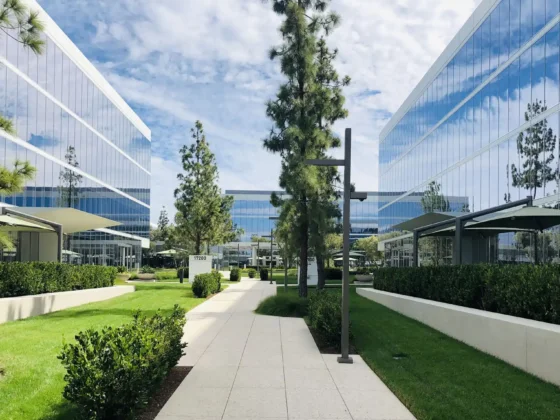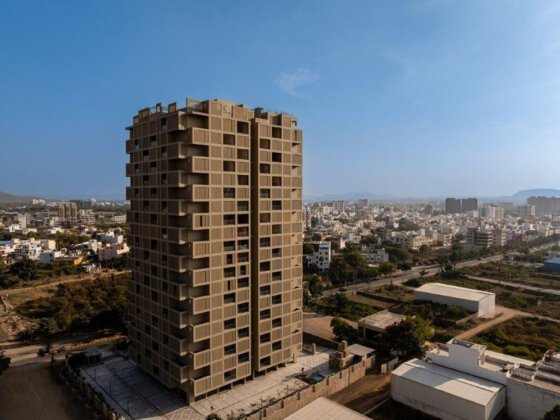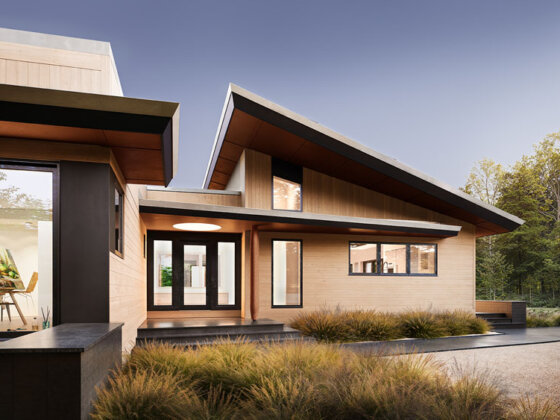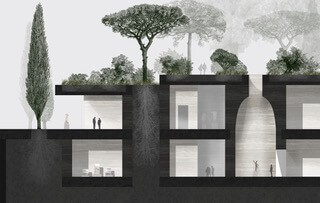Al-Masayel, Kuwait
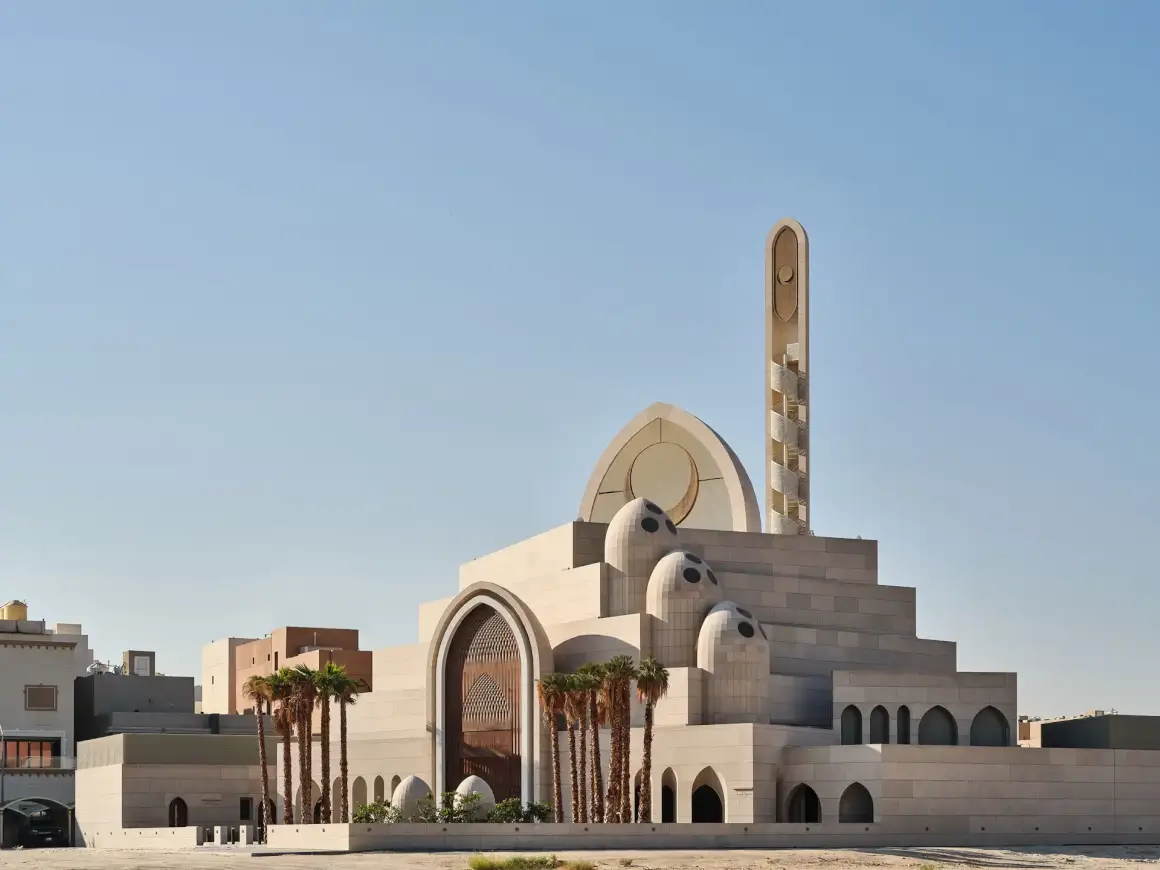
The Mamluki Lancet Mosque, designed by Adlah Mohammed Abdulrahman AlBahar, is a striking fusion of classical Egyptian Mamluki architecture and modern design, situated in a residential neighborhood in Al-Masayel, Kuwait. This mosque exemplifies a thoughtful blend of tradition and contemporary aesthetics, creating a spiritual and functional space tailored to the needs of the local community.
The Mamluki Lancet Mosque won an 2025 International Architecture Award from The Chicago Athenaeum: Museum of Architecture and Design.
At the heart of the mosque’s design is the inspiration drawn from the Moqarnas, a traditional Islamic architectural feature used to distribute dome weight over a square room via intricate geometric patterns. This concept is artistically combined with the symbolism of the Islamic Star, representing unity and divine connection. Architecturally, the mosque is composed of five distinct masses, symbolizing the five daily Muslim prayers. Each mass plays a specific role in spatial and symbolic terms: the lower mass aligns with the Qibla (direction of Mecca), anchoring faith and prayer direction, while the upper mass aligns with the mosque’s site, connecting the building to its surroundings. The three masses in between merge dynamically, creating a funnel-shaped interior free of columns, which allows unobstructed views and proper orientation for congregants during prayer.
The form of the mosque evolves upward through these five masses, progressively rotating and transforming to bridge the symbolic divide between the Qibla-aligned base and the site-aligned upper volume. The façade features characteristic lancet arch openings that punctuate the structure, framing windows and architectural details at multiple levels. Additionally, a specially positioned extra mass completes the Islamic Star motif when viewed from above, enhancing the mosque’s aerial identity and highlighting alternative side entrances to this sacred space.
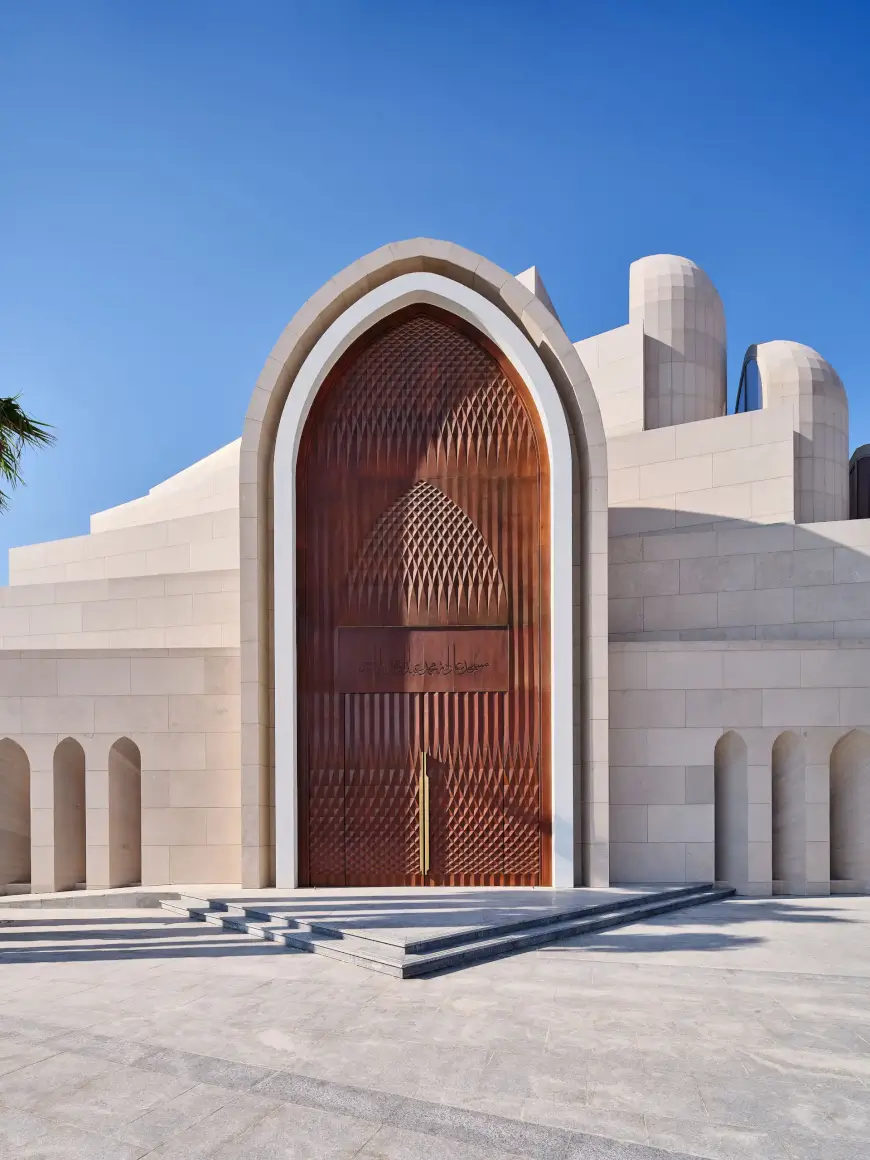
The main entrance is marked by a grand wooden door that echoes the half dome defining the mosque’s core, extended to form a welcoming lobby space. Adjacent to this entryway, smaller half domes introduce natural light into the interior as luminous wells and provide an inviting threshold to the women’s prayer quarters. These smaller forms rhythmically align with the mosque’s rotational geometry, reinforcing the theme of unity central to the design.
A prominent minaret rises along the central axis of the mosque, serving as both a visual landmark and a spiritual element. It seamlessly connects the exterior with the interior Mihrab wall, directing focus towards the Qibla and enhancing the worshippers’ spiritual experience.
Material choices reflect a modern reinterpretation of classic Mamluki era materials, utilizing gray stone cladding and white clay plaster in restrained, authentic tones. The color palette features cool grays and whites, accented subtly with brass details. These finishes cover both interior and exterior surfaces and are enriched with intricate ornamentation, including engraved Quranic calligraphy and carefully crafted metalwork, bridging tradition and modernity with timeless grace.

Inside, the play of light and material creates a dynamic spatial experience. The stable, grounded lower masses are clad in stone to convey solidity, while the upper masses are finished in pure white, suggesting lightness and movement. Interior walls and partitions showcase elongated Thuluth-style Quranic inscriptions, rendered in relief with a modern twist. Natural light filters through gaps between the rotating masses, casting ethereal rays on the calligraphy, enhancing the spiritual atmosphere.
Functionally, a sliding partition separates the male prayer hall from the women’s prayer area. This adaptable barrier opens during Ramadan to accommodate larger groups of women worshippers, fostering inclusiveness while maintaining communal unity.
In summary, the Mamluki Lancet Mosque is a masterful tribute to Islamic architectural heritage enriched with contemporary design sensibilities. It thoughtfully integrates traditional forms, symbolism, and materials with modern spatial and structural innovations, creating a meaningful, sacred environment that serves its worshippers and community both spiritually and architecturally.

Architects: Babnimnim Design Studio
Design Team: Jassim Al Saddah, Tareq Hashim, Mishari Alnajjar, Yolla Ali, Hesham Younis, Ahmed Alkhateeb, Manaf Alnafouri, Mustafa Reda, Tasneem Baxa, and Baraa Al Toubaji
General Contractor: Bneider International
Client: Adlah Mohammed Abdulrahman Al Bahar
Photographers: Mohammed Alsaad and Nasser Alomairi Exterior Photography: Mohammed Ashkanani
Interior Photography: Mohammed Alsaad and Nasser Alomairi
Calligraphy: Jassim Alnasrallah
